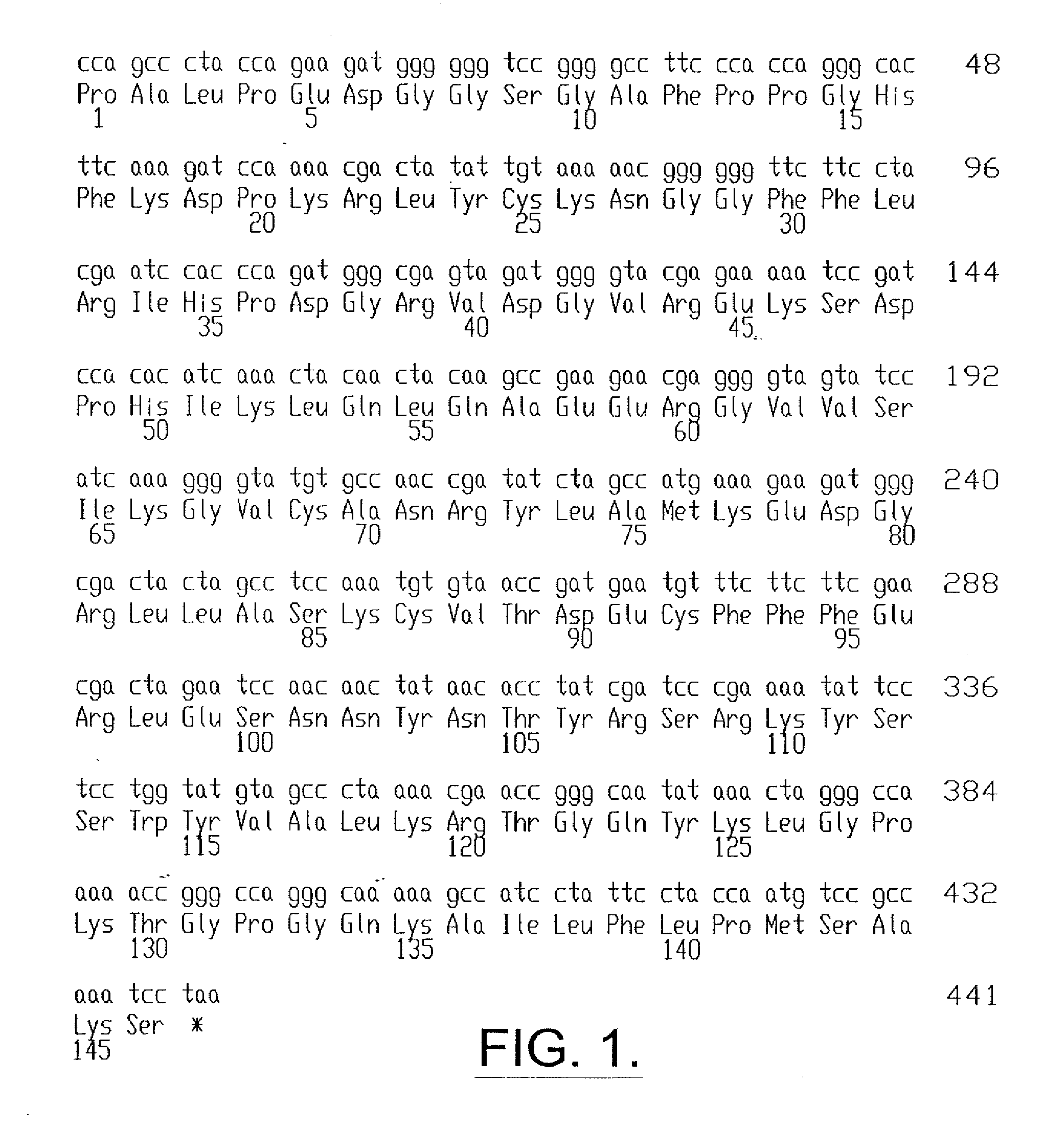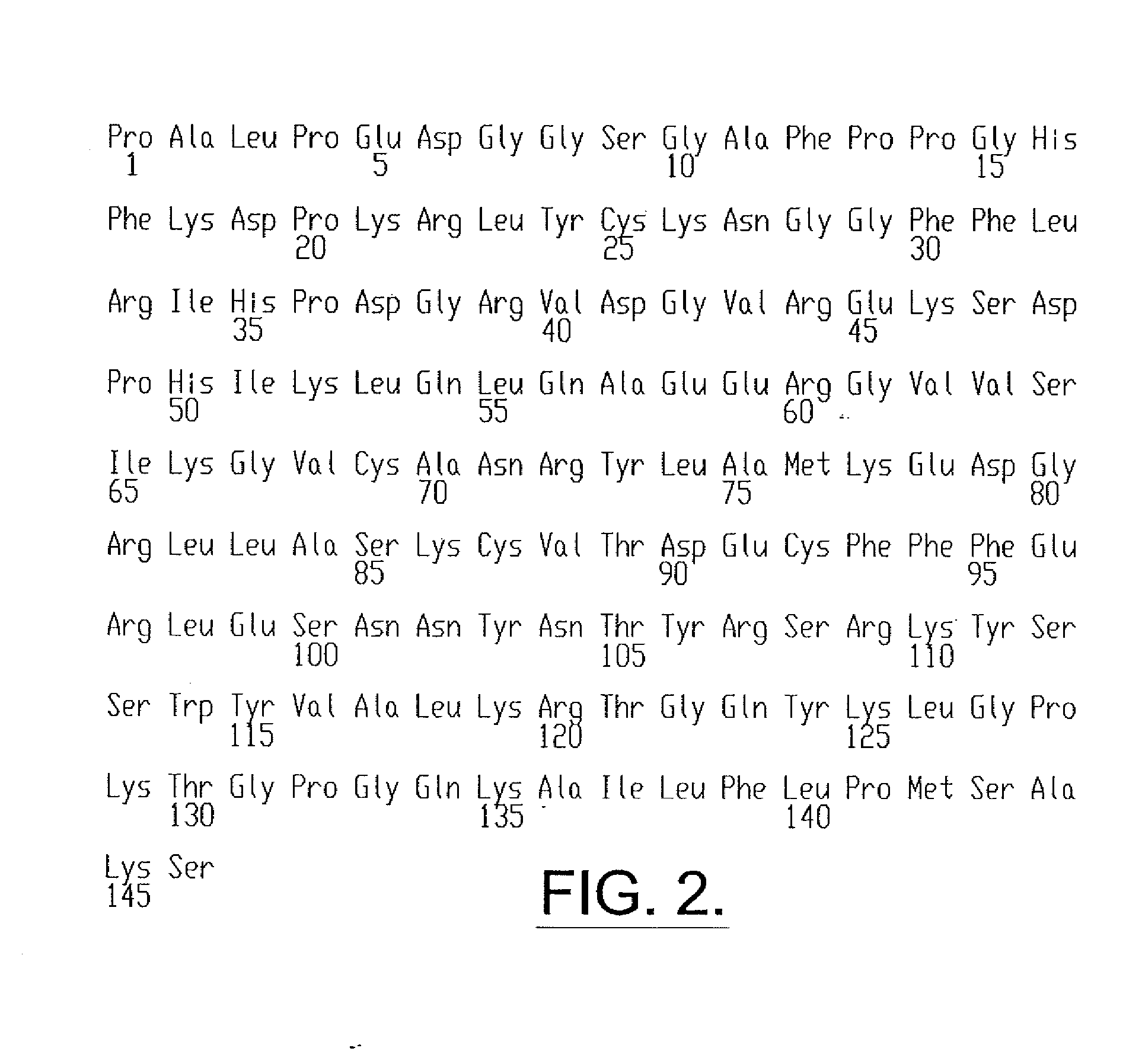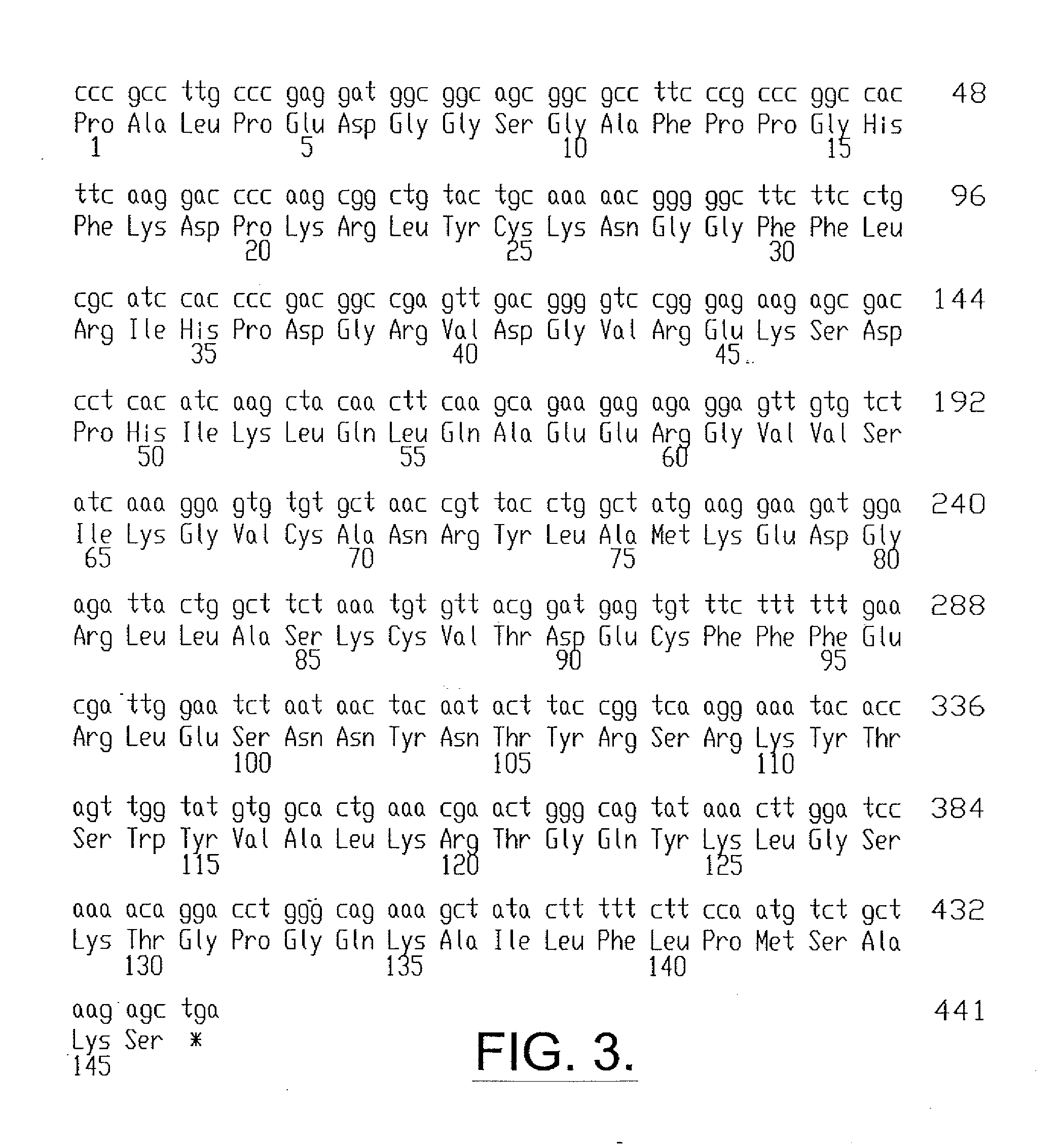Methods and compositions for the treatment of peripheral artery disease
a technology of peripheral artery disease and compositions, applied in drug compositions, antinoxious agents, peptide/protein ingredients, etc., can solve the problems of limiting the duration of the benefit, increasing the risk of adverse cardiovascular events and death, and affecting the effect of treatment effectiveness
- Summary
- Abstract
- Description
- Claims
- Application Information
AI Technical Summary
Benefits of technology
Problems solved by technology
Method used
Image
Examples
example 1
Unit Dose of rFGF-2 Employed in a Phase I Clinical Trial
[0078] The recombinantly produced FGF-2 (rFGF-2) having the sequence shown in FIG. 2 (SEQ ID NO:2) was formulated as a unit dose and pharmaceutical composition. The various formulations are described below.
[0079] The rFGF-2 unit dose was provided as a liquid in 3 cc type I glass vials with a laminated gray butyl rubber stopper and red flip-off overseal. The rFGF-2 unit dose contained 1.2 ml of 0.3 mg / ml rFGF-2 of FIG. 2 (SEQ ID NO:2) in 10 mM sodium citrate, 10 mM monothioglycerol, 1 mM disodium dihydrate EDTA (molecular weight 372.2), 135 mM sodium chloride, pH 5.0. Thus, in absolute terms, each vial (and unit dose) contained 0.36 mg rFGF-2. The vials containing the unit dose in liquid form were stored at 2° to 8° C.
[0080] The diluent was supplied in 5 cc type I glass vials with a laminated gray butyl rubber stopper and red flip-off overseal. The rFGF-2 diluent contains 10 mM sodium citrate, 10 mM monothioglycerol, 135 mM s...
example 2
Phase II PAD Clinical Trial
[0082] Peripheral artery disease (PAD), as defined by resting anklebrachial index (ABI) less than 0.9, is a common condition afflicting about 15% of adults greater than 55 years of age. About 33% of these individuals are symptomatic with claudication; about 25% will progress. With worsening blood flow limitation, the spectrum of PAD runs from mild to moderate to severe claudication, followed by limb-threatening ischemia, initially characterized by rest pain, then poor wound healing, and impending or overt gangrene.
[0083] A phase II trial was undertaken to assess the efficacy of intra-arterial administration of rFGF-2 on exercise capacity in patients with intermittent claudication due to infra-inguinal PAD. The phase II PAD trial was a multicenter, randomized, double-blind, placebo-controlled, regimen finding study of rFGF-2 to evaluate the safety, pharmocokinetics, and efficacy by intra-arterial (IA) infusion over 20 minutes in PAD subjects with moderate...
example 3
Phase III PAD Clinical Trial
[0155] A phase III, multicenter (up to 50 sites), double-blind, placebo-controlled, dose-optimization study is conducted. The primary objective of this trial is to evaluate safety and efficacy of an intra-arterial (IA) infusion of 3.0 μg / kg or 30.0 μg / kg rFGF-2 versus placebo in peripheral artery disease (PAD) subjects with moderate to severe claudication. The trial enrolls 450 subjects (150 per arm) with moderate to severe claudication limiting exercise. Inclusion criteria and exclusion criteria are shown in Table 17. Sample size may be adjusted based on DSMB evaluation of variability of peak walking time at 90 days after 225 subjects are enrolled.
TABLE 17Synopsis of Phase III Clinical Trial.InclusionMale or female ≧40 years of ageCriteriaHistory of moderate to severe claudication limiting exercise for >6 monthsABI >0.3 and 20% decrease after exercisePeripheral angiogram (contrast or MRA) within 4 months confirming >70%obstruction of one or more infra...
PUM
 Login to View More
Login to View More Abstract
Description
Claims
Application Information
 Login to View More
Login to View More - R&D
- Intellectual Property
- Life Sciences
- Materials
- Tech Scout
- Unparalleled Data Quality
- Higher Quality Content
- 60% Fewer Hallucinations
Browse by: Latest US Patents, China's latest patents, Technical Efficacy Thesaurus, Application Domain, Technology Topic, Popular Technical Reports.
© 2025 PatSnap. All rights reserved.Legal|Privacy policy|Modern Slavery Act Transparency Statement|Sitemap|About US| Contact US: help@patsnap.com



